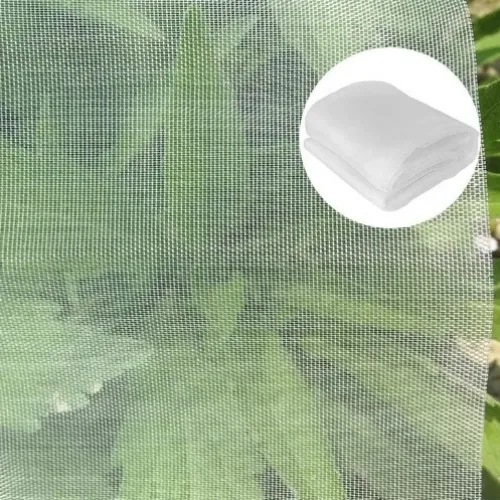-
 Afrikaans
Afrikaans -
 Albanian
Albanian -
 Amharic
Amharic -
 Arabic
Arabic -
 Armenian
Armenian -
 Azerbaijani
Azerbaijani -
 Basque
Basque -
 Belarusian
Belarusian -
 Bengali
Bengali -
 Bosnian
Bosnian -
 Bulgarian
Bulgarian -
 Catalan
Catalan -
 Cebuano
Cebuano -
 China
China -
 Corsican
Corsican -
 Croatian
Croatian -
 Czech
Czech -
 Danish
Danish -
 Dutch
Dutch -
 English
English -
 Esperanto
Esperanto -
 Estonian
Estonian -
 Finnish
Finnish -
 French
French -
 Frisian
Frisian -
 Galician
Galician -
 Georgian
Georgian -
 German
German -
 Greek
Greek -
 Gujarati
Gujarati -
 Haitian Creole
Haitian Creole -
 hausa
hausa -
 hawaiian
hawaiian -
 Hebrew
Hebrew -
 Hindi
Hindi -
 Miao
Miao -
 Hungarian
Hungarian -
 Icelandic
Icelandic -
 igbo
igbo -
 Indonesian
Indonesian -
 irish
irish -
 Italian
Italian -
 Japanese
Japanese -
 Javanese
Javanese -
 Kannada
Kannada -
 kazakh
kazakh -
 Khmer
Khmer -
 Rwandese
Rwandese -
 Korean
Korean -
 Kurdish
Kurdish -
 Kyrgyz
Kyrgyz -
 Lao
Lao -
 Latin
Latin -
 Latvian
Latvian -
 Lithuanian
Lithuanian -
 Luxembourgish
Luxembourgish -
 Macedonian
Macedonian -
 Malgashi
Malgashi -
 Malay
Malay -
 Malayalam
Malayalam -
 Maltese
Maltese -
 Maori
Maori -
 Marathi
Marathi -
 Mongolian
Mongolian -
 Myanmar
Myanmar -
 Nepali
Nepali -
 Norwegian
Norwegian -
 Norwegian
Norwegian -
 Occitan
Occitan -
 Pashto
Pashto -
 Persian
Persian -
 Polish
Polish -
 Portuguese
Portuguese -
 Punjabi
Punjabi -
 Romanian
Romanian -
 Russian
Russian -
 Samoan
Samoan -
 Scottish Gaelic
Scottish Gaelic -
 Serbian
Serbian -
 Sesotho
Sesotho -
 Shona
Shona -
 Sindhi
Sindhi -
 Sinhala
Sinhala -
 Slovak
Slovak -
 Slovenian
Slovenian -
 Somali
Somali -
 Spanish
Spanish -
 Sundanese
Sundanese -
 Swahili
Swahili -
 Swedish
Swedish -
 Tagalog
Tagalog -
 Tajik
Tajik -
 Tamil
Tamil -
 Tatar
Tatar -
 Telugu
Telugu -
 Thai
Thai -
 Turkish
Turkish -
 Turkmen
Turkmen -
 Ukrainian
Ukrainian -
 Urdu
Urdu -
 Uighur
Uighur -
 Uzbek
Uzbek -
 Vietnamese
Vietnamese -
 Welsh
Welsh -
 Bantu
Bantu -
 Yiddish
Yiddish -
 Yoruba
Yoruba -
 Zulu
Zulu
insect cage mesh
The Importance of Insect Cage Mesh in Entomological Research
Insect studies, also known as entomology, have provided profound insights into the diverse species that inhabit our planet. One crucial tool that entomologists utilize in conducting their research is insect cage mesh. This specialized mesh serves multiple purposes, ranging from habitat simulation to facilitating the observation of insect behavior and interactions. This article explores the significance of insect cage mesh in scientific research, its various applications, and considerations for selecting the right type.
Understanding Insect Cage Mesh
Insect cage mesh is designed to create a controlled environment for insects. It comprises fine netting, typically made of materials such as nylon or polyester, that allows for ventilation while firmly containing insects within the enclosure. The mesh size is essential; if it is too large, smaller insects may escape, while if it is too fine, it could restrict airflow and hinder the insects’ natural behaviors. Properly designed insect cages help maintain environmental conditions that can mimic natural habitats, such as humidity, temperature, and light exposure.
Applications in Research
1. Behavioral Studies One of the primary applications of insect cage mesh is in the study of insect behavior. Researchers can observe feeding habits, mating rituals, and social interactions in a controlled environment. For example, scientists studying the mating behavior of fruit flies can place them in mesh cages that allow for the observation of courtship without external interference. Real-time observation can yield valuable data on factors influencing reproduction, such as environment and pheromone signaling.
2. Ecological Studies Insect cage mesh also plays a pivotal role in ecological research. By simulating specific habitats, researchers can study how insects interact with their surroundings. This includes predator-prey dynamics, competition for resources, and the impact of invasive species. Understanding these interactions is crucial for biodiversity conservation and ecosystem management.
3. Disease Studies With insects being vectors for numerous diseases, insect cage mesh is vital for studying the transmission of pathogens. Researchers can experiment with disease-carrying insects in a controlled setting, investigating how environmental factors influence transmission rates. For example, studying mosquitoes in a mesh cage can help scientists understand their feeding preferences and how different variables affect their ability to transmit diseases like malaria or dengue.
4. Laboratory Breeding and Genetics Insect cage mesh also facilitates the laboratory breeding of specific insect strains for genetic research. By isolating breeding pairs in a cage, researchers can study inheritance patterns and the impact of genetic modifications. This is particularly useful in studying pest resistance in crop insects or understanding gene functions within various species.
insect cage mesh

Choosing the Right Insect Cage Mesh
When deciding on insect cage mesh, several factors must be considered
1. Mesh Size Selecting the appropriate mesh size is critical. The size should prevent escape while allowing appropriate airflow. Typically, a mesh size between 0.5 mm to 2 mm is used for most small insects.
2. Durability The material used is essential for durability and usability. Nylon and polyester are popular due to their resistance to tearing and environmental degradation.
3. Visibility For observation purposes, high visibility is crucial. Clear mesh enables researchers to monitor insect activities without obstruction.
4. Easy Access Cages that allow for easy access, possibly with zippers or removable panels, can facilitate feeding, cleaning, and monitoring without causing stress to the inhabitants.
Conclusion
Insect cage mesh is a fundamental component in entomological research, enabling scientists to study insect behavior, ecology, and genetics effectively. By providing controlled environments, these mesh enclosures facilitate a deeper understanding of insects and their roles in ecosystems. As entomology continues to evolve, the development of more refined and specialized insect cage mesh will undoubtedly enhance our understanding and management of insect populations, ultimately benefiting various scientific and agricultural endeavors.
-
Shipping Plastic Bags for Every NeedNewsJul.24,2025
-
Safety Netting: Your Shield in ConstructionNewsJul.24,2025
-
Plastic Mesh Netting for Everyday UseNewsJul.24,2025
-
Nylon Netting for Every UseNewsJul.24,2025
-
Mesh Breeder Box for Fish TanksNewsJul.24,2025
-
Expanded Steel Mesh Offers Durable VersatilityNewsJul.24,2025











